City College of San Francisco (CCSF) revealed last month the design for a three-story performing arts complex at its main Ocean Avenue campus that’s set to feature a 600-seat auditorium, 150-seat studio theater, and 100-seat recital hall along with practice and rehearsal rooms, instructional spaces, offices, and a monumental mural created by one of the most prominent Mexican artists of the 20th century.
Created within an airplane hangar in front of a live audience during the Golden Gate International Exposition, the 10 steel-framed concrete panels comprising Diego Rivera’s towering fresco Pan America Unity (or The Marriage of the Artistic Expression of the North and of the South on this Continent) will be installed—all 60,000 pounds of it—within the building’s glass curtain wall–wrapped lobby, which was specially designed to accommodate the work and maximize its public viewing potential. Seattle-based LMN Architects, joined by local firm TEF Design in the role of architect of record, was commissioned by CCSF for the major campus addition.
Saying that the project reflects the “highly interdisciplinary character of performance venues in the 21st century,” LMN partner John Chau described the 93,000-square-foot building, composed of three blocky concrete volumes of different sizes, as being “designed from the inside-out” to “take advantage of the building program, the views, and the circulation patterns around campus.”
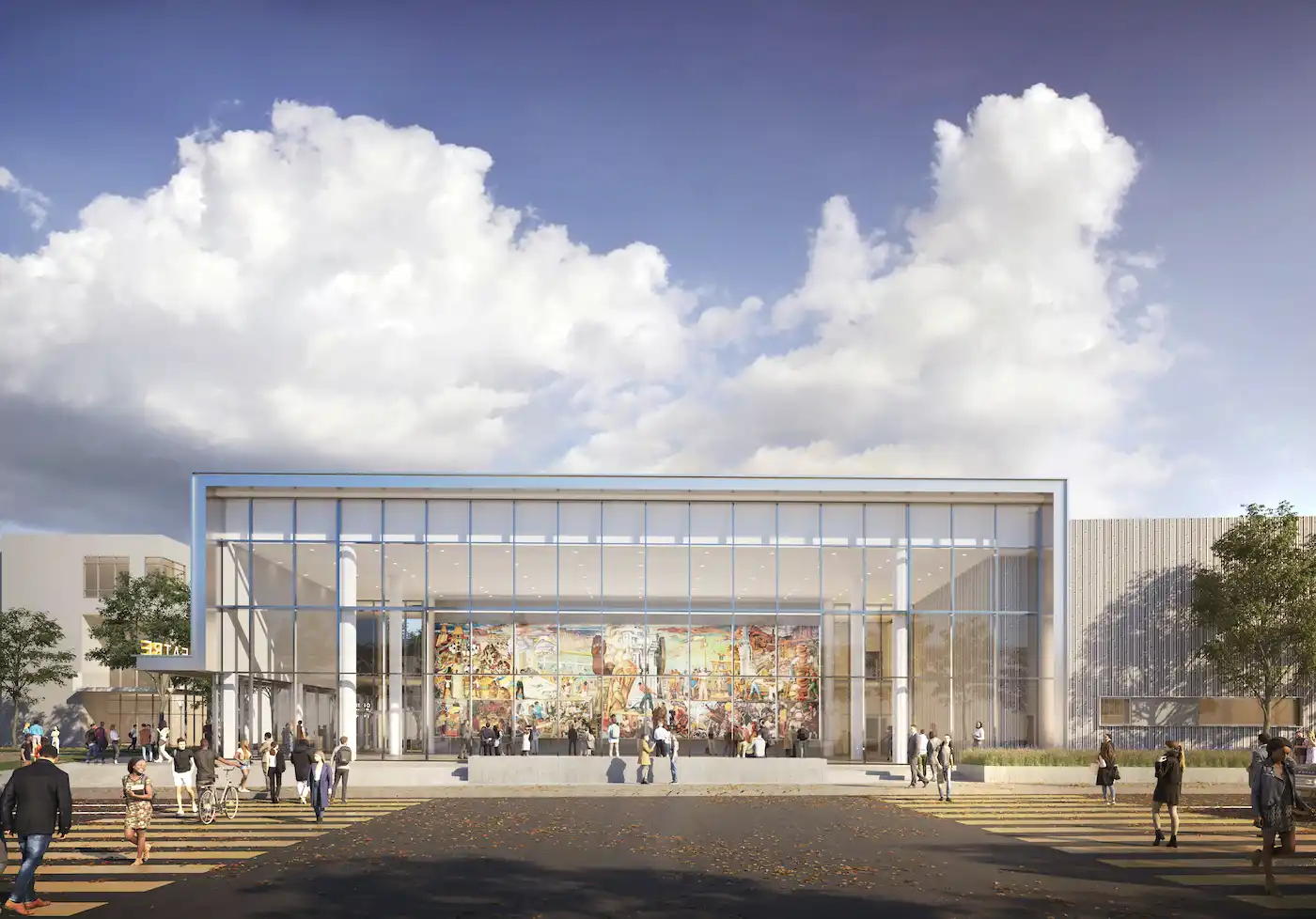
Three concrete blocks will hold each of the theater's main performance halls; a glass-encased lobby allows passersby to view Rivera's work. Image courtesy LMN Architects
“The lobby will showcase the artwork and will allow students and visitors to admire the mural from multiple angles,” Chau said.
The unveiling of the new (appropriately named) Diego Rivera Theater at CCSF marks the latest—and one would hope final—chapter for Pan American Unity, which spent much its early, post-World’s Fair years crated in storage on San Francisco’s Treasure Island before being relocated to the lobby of a then-newly completed theater on the college’s campus in the early 1960s, where it remained in a somewhat cloistered state, hidden away from wide public view in a too-small space. CCSF’s Ocean Campus is home to several major artworks created during the 1939–1940 Golden Gate International Exhibition. The architect of the public community college’s main campus, Timothy L. Pflueger, was among the core organizers of the event, designing several fairground buildings and conceiving the Art in Action exhibit that yielded the mural. (The likeness of Pflueger, a major San Francisco architect of the era, appears in Pan American Unity.)
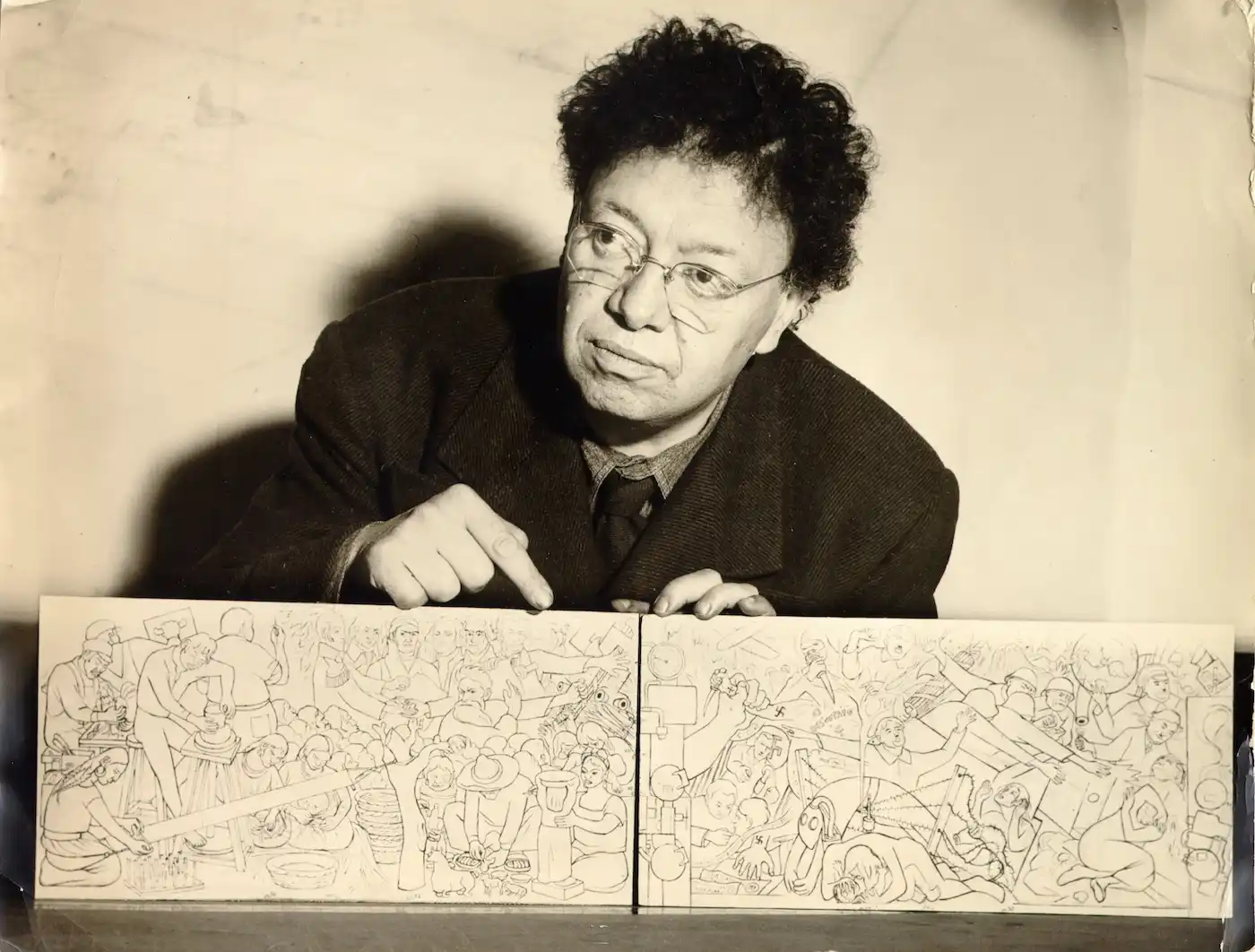
Diego Rivera and a sketch for his Pan American Unity, created during the 1939–1940 World's Fair in San Francisco. Photo courtesy San Francisco History Center/San Francisco Public Library
As detailed by Chau, the forthcoming performing arts facility, poised as the “new culture heart of the CCF campus,” takes an inverse approach to displaying the artwork by putting it on full public view, including to pedestrians outside who will be able to take in the full mural through the lobby’s glass walls.
In 2021, the little-seen mural made a highly publicized—and logistically complex—move to the San Francisco Museum of Modern Art, taking over Snøhetta’s soaring Roberts Family Gallery. Presented in partnership with CCSF, Pan American Unity will remain on view at SFMOMA until March of next year when it will be returned to the college. (In June, the museum announced its acquisition of a residential pod extracted from Kisho Kurokawa’s now-demolished Nakagin Capsule Tower in Tokyo, which seems a fitting potential work for the first-floor gallery space currently populated by Rivera’s mural.)
LMN and TEF’s new Diego Rivera Theater at CCSF is projected to open in 2027, as the final project in a campus expansion scheme focused on the western side of Frida Kahlo Way in an area that was once a surface parking lot. Breaking ground late last year was the building’s future neighbor, the CCSF STEAM Building, a project led by a design-build team comprising Rudolph & Sletten and SmithGroup.



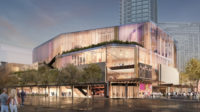
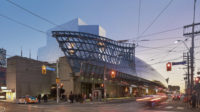
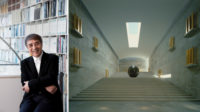
Post a comment to this article
Report Abusive Comment